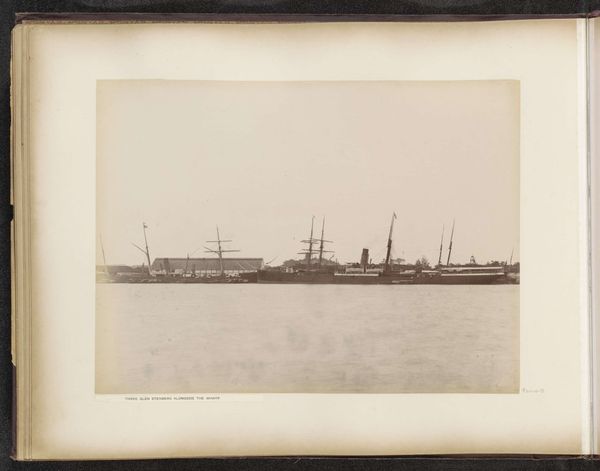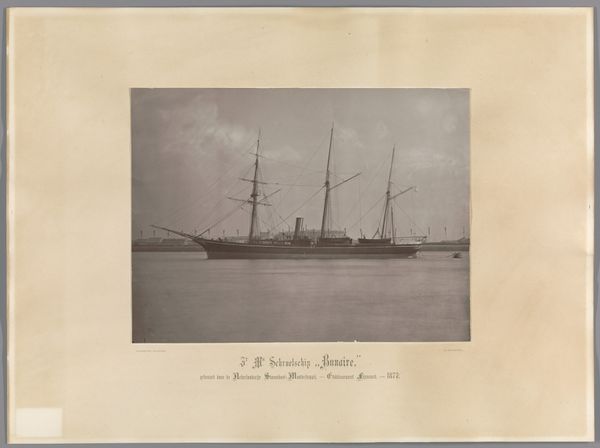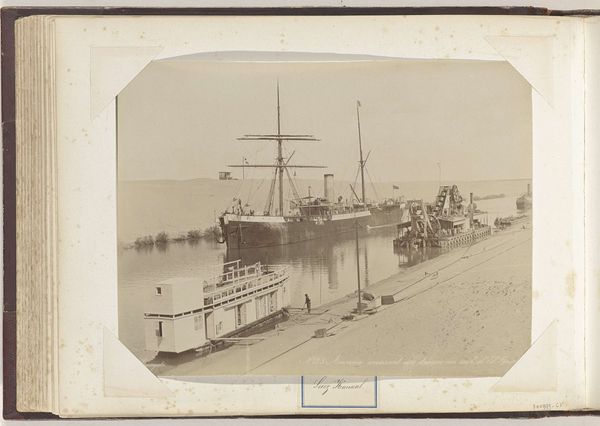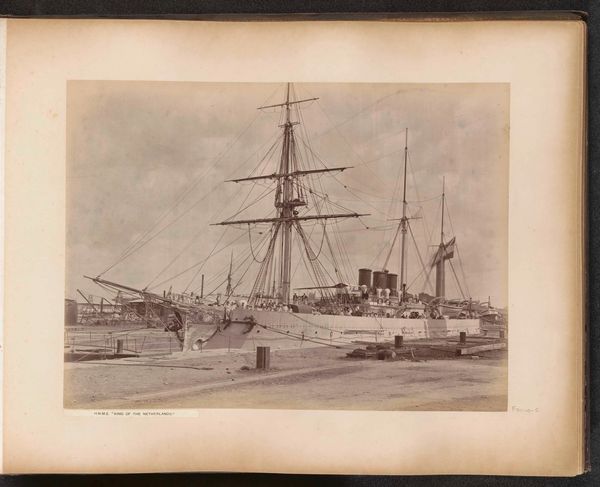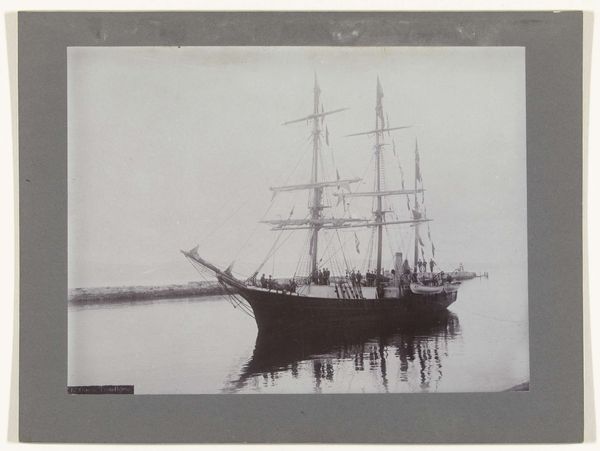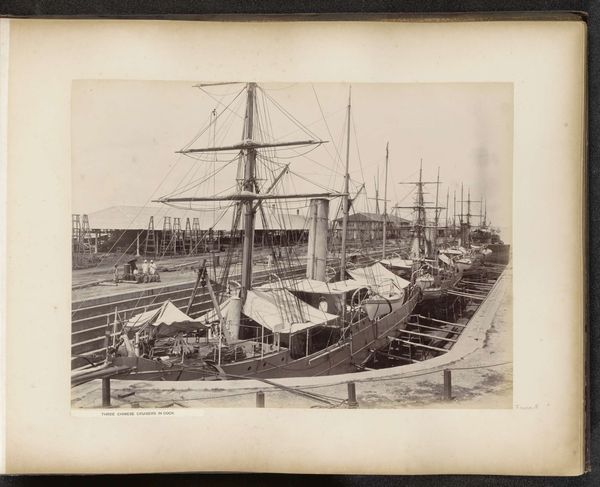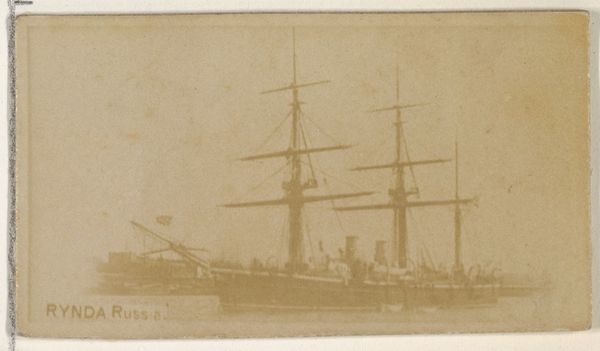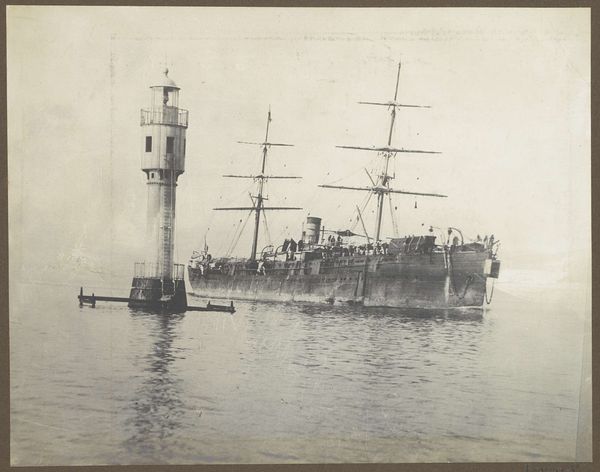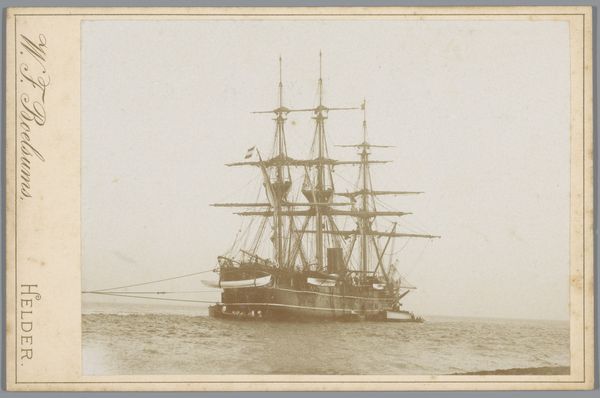
print, photography
#
print photography
# print
#
landscape
#
photography
#
realism
Dimensions: height 136 mm, width 165 mm, height 238 mm, width 297 mm
Copyright: Rijks Museum: Open Domain
Curator: I'm immediately struck by the somber stillness despite its grand subject matter. It almost feels like a posed portrait rather than a candid shot. Editor: Indeed. This photograph depicts the Dutch armored ship Hr.Ms. Friesland, taken sometime between 1910 and 1930 by Willem Frederik Boelsums. It's a powerful piece, documenting an impressive feat of engineering during a period of great geopolitical tension. We can interpret this through a critical lens, thinking about the ship itself as an industrial object produced by extensive labor—the materiality of its steel and construction are important here. Curator: You’re right; it is difficult to ignore the material presence. The sheer scale of it, a man-made object capable of such potential violence… It brings to mind discussions of power, class and the militarization of nations during the rise of modernity, even hyper-masculinity and its inherent link to military technology. Editor: Precisely! Think of the raw materials extracted, the foundries working at full capacity, the shipbuilding industries burgeoning – it all speaks volumes about resource allocation, class dynamics and labor practices. Each rivet hammered, each plate welded, represents countless hours of skilled and unskilled labor. It shifts our gaze from the glorification of naval power toward understanding the complex networks and hierarchies that enabled its creation. It begs us to consider what kinds of bodies worked on its assembly and whose profits lined the pockets of the owners? Curator: I see that connection – and in the stillness, even absence of that labor itself adds another layer. Is this image meant to inspire national pride or serve as a warning about the latent potential for war? Is it also possible to interpret the photographer’s choice in presenting us a certain depiction that highlights how people relate to power when there's military equipment and violence implied within this social setting? Editor: Absolutely. A photograph, no matter how objective it might appear, always involves choices made by the artist, conscious or unconscious. To me it stands as a powerful reminder of the intertwined relationships between industry, military ambition, labor, and societal structures – even at a remove through photographic representation. Curator: Examining Boelsums’ “Het Nederlandse marine pantserschip Hr.Ms. Friesland” allows us to see how artistic depictions of power relate to real-world conditions, highlighting the intricate and often invisible relationship. Editor: Agreed. A sobering reminder that even grand displays of engineering prowess are always embedded within networks of labor, exploitation, and political power.
Comments
No comments
Be the first to comment and join the conversation on the ultimate creative platform.
